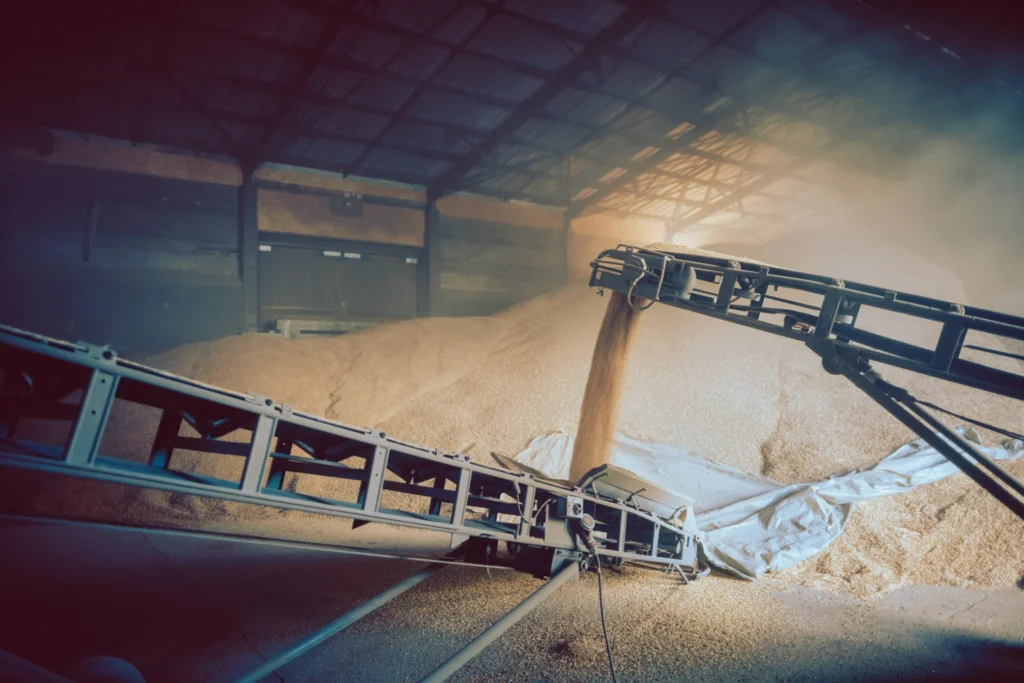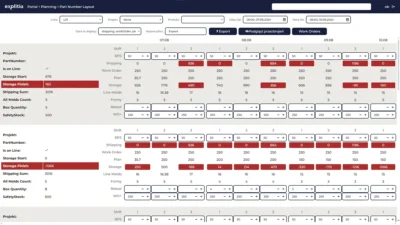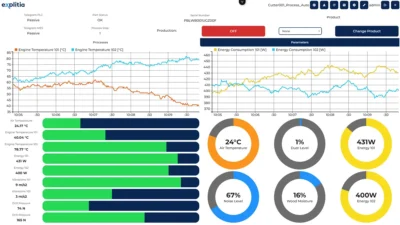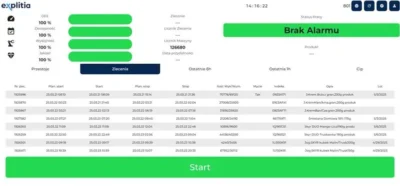Production planning in a modern industrial mill requires precision, flexibility, and an understanding of real operational constraints. Simultaneously handling orders from artisan bakeries, retail clients, and large industrial customers means that efficient management must take into account not only raw material availability but also line capacity, maintenance schedules, and changing quality requirements for individual batches.
Effective production planning in a mill is much more than just scheduling. It is a complex optimization process that directly impacts profitability, on-time delivery, and customer satisfaction.
In this article, we explore how APS and MES systems support milling and packing planning processes in milling facilities – from data inputs to ERP synchronization and real operational benefits.
Five planning challenges in an industrial mill
Production in a plant with a capacity of 400–800 tons per day involves high variability of parameters such as raw material quality, availability of machines, staff, packaging, and packing lines. The production schedule must therefore take many variables into account. Let’s examine the main challenges of this industry.

Availability of raw materials with the right parameters
The purchasing department is responsible for sourcing grain. The harvest season is short, and the limited capacity of on-site silos – often sufficient for only 4–6 weeks of milling – requires securing deliveries for the following months. Therefore, the raw material purchasing department operates independently from the planning department and is responsible for ongoing contracting and purchasing – both in terms of quantity and required quality parameters.
Meanwhile, the planner, working closely with the sales department, must continuously communicate production demand. Based on the order schedule, they cooperate with the purchasing department to ensure the availability of suitable raw materials. For hard-to-source batches – e.g., high-protein grain – the planner must react dynamically: adjust the production plan, optimize machine utilization, avoid downtimes, and be ready to resume production immediately when the material arrives.
Line capacity and machine availability
Industrial mills consist of several technological lines, each requiring regular downtimes for maintenance, cleaning when switching grain types, and addressing potential failures. Planning must anticipate these downtimes and optimize the production sequence to minimize cleaning time between different grain types.

Human resources and work organization
Shift staffing, operator qualifications, and the availability of packing and maintenance personnel directly affect the execution of the production plan. Absences or staff turnover can significantly impact the schedule, so planning must include a contingency approach.
Availability of packaging and transport components
The production plan must be tightly synchronized with the availability of packaging materials: plastic and paper bags for retail clients, bulk bags, and transport pallets. Delays in packaging deliveries can completely halt the packing of finished products.
Packing line performance
Finished products are packed on packing lines, which differ in output depending on packaging format. Automatic packing machines integrated with scales, labelers, and palletizers often represent a bottleneck in the production process. Therefore, they require special attention when planning specific batches.
In such a complex environment, manual planning becomes insufficient. This is where IT systems come into play.

APS and MES in a milling plant – how they work
APS – advance planning and flexibility
The APS (Advanced Planning & Scheduling) system analyzes current resources and creates a realistic production schedule. It considers all constraints: grain availability, quality parameters, machine capacity, packaging, and staff availability.
The key function of APS is optimizing the milling sequence to minimize line cleaning time.
The ‘what-if’ feature allows for emergency scenario analysis – such as delivery delays or machine breakdowns. This gives the planner concrete recommendations on the most efficient way to fulfill orders for a given period. Such flexibility not only reduces downtime but also minimizes the impact of external variables on final production results.
MES – real-time production control
The MES (Manufacturing Execution System) monitors the plan execution. It records data from sensors, scales, separators, rollers, or packing machines. It provides information about:
• order completion pace and raw material consumption,
• machine efficiency (OEE),
• waste levels and product quality,
• traceability – MES ensures full traceability of batches – from specific grain in the silo, through milling, to the packaged product shipped to the client. In case of complaints or quality audits, it enables immediate identification of the source of the issue.
Importantly, MES integrates with the laboratory, recording the parameters of each grain batch and automatically assigning it to specific orders. If the grain quality deviates from standards, MES can automatically block the batch or redirect it for production of a different flour type.

Don’t know how to improve your production?
Instead of guessing, take advantage of explitia’s support and book a free Workshop 360.
Integrating APS, MES, and ERP – one coherent process
Modern production planning requires full integration of ERP, APS, and MES systems.
From order to execution: ERP and APS
The process starts in the sales department, which enters market demand data into the ERP – including specific orders and sales forecasts. This forms the basis for generating material requirements plans (MRP).
The APS system retrieves data from the ERP and, considering raw material availability, stock levels, and grain batch quality parameters, creates a realistic production schedule. This helps avoid situations where a product is offered to a client that cannot be produced on time.
Optimization and feedback
APS optimizes the order sequence, aligns it with the plant’s technical constraints, and sends expected completion times back to ERP. Orders are then forwarded to MES, which oversees physical execution and real-time tracking.
A key advantage of this architecture is the ability to dynamically pass feedback. MES verifies schedule execution and, in case of delays (e.g., packing line failure), updates APS and ERP. This way:
• missed deadlines and unfulfilled orders are avoided,
• sales teams always have up-to-date customer info,
• technologists, operators, and planners work on the same data.
This eliminates the gap between plan and reality.
Planning and OEE and OTIF
Good planning directly improves performance indicators:
• OEE (Overall Equipment Effectiveness) increases thanks to better machine utilization and reduced downtime,
• OTIF (On Time In Full), which measures delivery timeliness and completeness, improves thanks to advance insight into bottlenecks.
Operational risk management
APS and MES systems play a crucial role in risk management. In the event of a packing line failure, MES instantly reports downtime and sends data to APS, which can automatically recalculate the schedule and suggest an alternative order sequence.
Similarly, if a batch must be blocked due to a sudden complaint, MES enables fast identification of all related raw material and component batches, reducing response time for the quality department.
Production planning in an industrial mill has evolved from simple schedules to advanced production management systems. Integrating ERP, APS, and MES allows not only for precise scheduling, but also dynamic adaptation, cost optimization, and complete quality control. This results in improved operational efficiency, better delivery punctuality, and a competitive edge in an increasingly demanding business environment.





